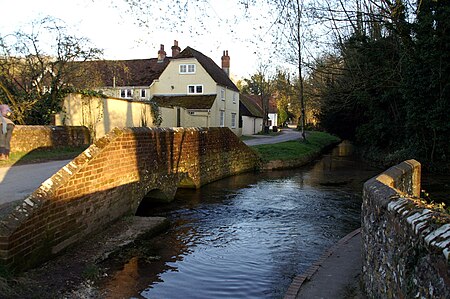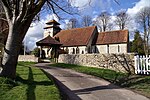Warnford

Warnford is a village and civil parish in the City of Winchester district of Hampshire, England. The parish covers 1283 hectares (3170 acres). The village lies on the A32 in the upper valley of the River Meon between West Meon and Exton. The population in 2019 was estimated at 220. The village is rural in character, with most of the buildings along River Lane, Lippen Lane and Hayden Lane. The George and Falcon pub and hotel, which is grade II listed and dates to the 18th century is located on the A32 near the centre of the village. The Church of Our Lady, located in Warnford Park to the south of the village, is Grade 1 listed.The village hall is located in Lippen Lane close to the centre of the village and was converted from a farm shop, having been earlier a pig farm laboratory. It was given to the village in 1998 by the owner of the Warnford Estate. The hall has a single room which can accommodate up to 100 people and is available for hire by the hour. Warnford Playground in Lippen Lane was given by the family of R.P. Chester in his memory in 1978 for the benefit of parishioners. It is managed by a charitable trust. It is open to the public, but there is very limited parking and no facilities such as toilets.
Excerpt from the Wikipedia article Warnford (License: CC BY-SA 3.0, Authors, Images).Warnford
Hayden Lane, Winchester Warnford
Geographical coordinates (GPS) Address Nearby Places Show on map
Geographical coordinates (GPS)
| Latitude | Longitude |
|---|---|
| N 51.003803 ° | E -1.109848 ° |
Address
Hayden Lane
SO32 3LF Winchester, Warnford
England, United Kingdom
Open on Google Maps









